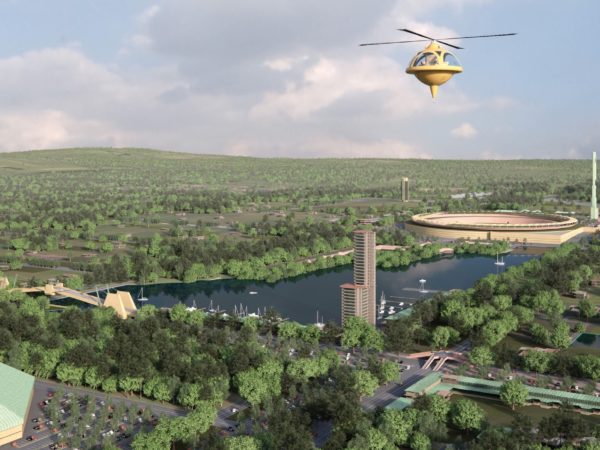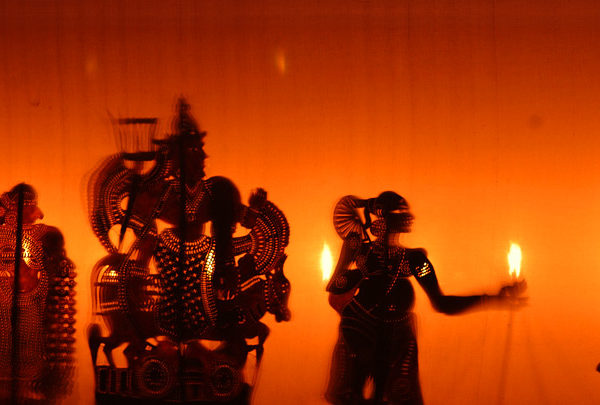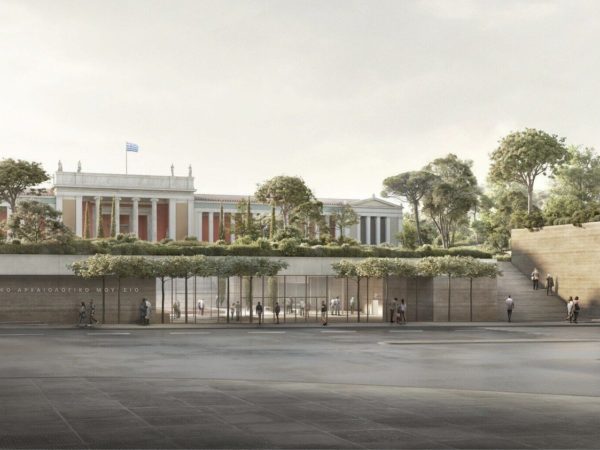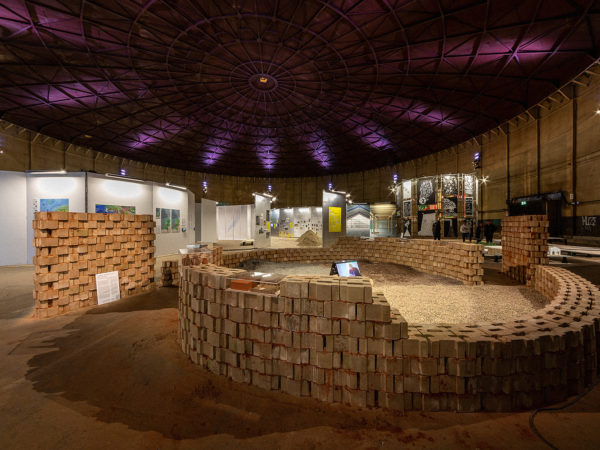The construction of early buddhist caves consisting of Viharas, laid the foundation for late and contemporary forms of buddhist monasteries. The chronology suggests a profitable relationship existed between the monks and wealthy traders. Monasteries located on a major trade route walked upon by wealthy merchants sponsored architectural additions including pillars, arches, reliefs and façades to the caves. Patronised by traders, Buddhist monks serving as missionaries often accompanied traders throughout India, up into Nepal and Tibet, spreading the dharma whilst travelling.
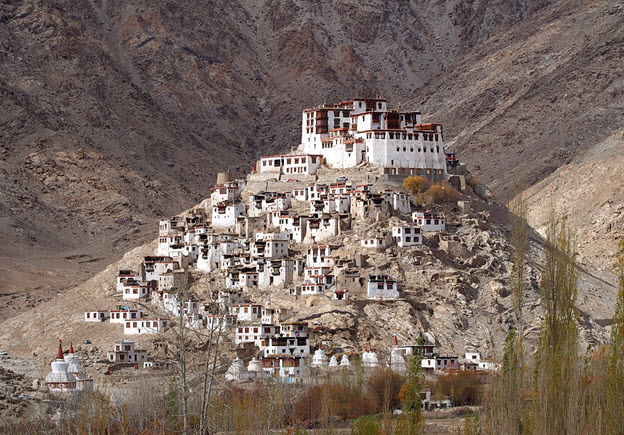
Monasteries accommodated dedicated structures composed of perishable materials, the buildings included dwellings, private cells, porches, storehouses, privies, promenades, wells, bathing chambers, and halls of unspecified purposes. Conversion of residential spaces into Buddhist space, including the donation of residences for transformation into monasteries was a recurrent practice in East Asia.
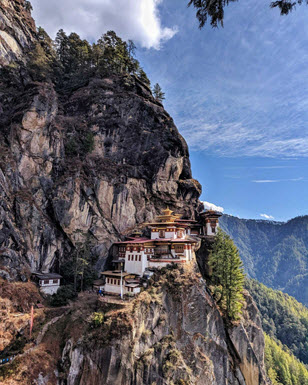
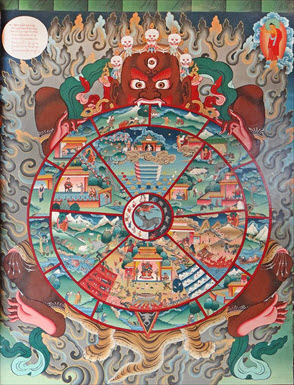
Paro Taktsang gompa (Tiger’s Nest) (left), Bhutan, 1692 CE, © Kandoo adventures
A wall painting in Tamang gompa (right), Nepal, 5th Century, Photograph © Dalbera – Jean-Pierre Dalbéra
Initially built as pure wooden structures, ‘Bhutanese dzong’ architecture is a subset of traditional wooden gompa/labrang design. Gompa often refers to a meditation room, detached from living quarters, where practitioners meditate and attend teachings. Contemporary structures are contrived composite of stone and sun-dried brick for outer walls and wood for inner walls. The foremost nous is the lack of timber and for not having built with only stone and brick is the ignorance of the technique of arch and dome. Although the window and door frames for residences are plain, those for temples are delicately carved focusing on the window eaves and lintels hanging tricolour cloth mantle decoration.
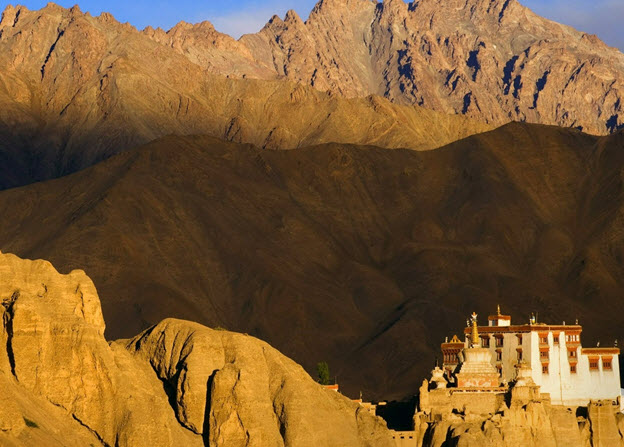
The uppermost rooms in the gompa are designed to the khenpo (the abbot), indicating his superior status. The most sacred spaces in a gompa are lha-khang (sacred shrine) and du-khang (assembly hall). Gon-khang (chamber of protective deities) and zalma (chamber of picture treasures) are also of prominent significance. Lower down in monasteries are the monks’ cells. The verandas of the du-khang are usually most extensively decorated. A monastery’s courtyard, the site of all monastic festivals, is an integral part of the building. Every courtyard has a lungta (prayer flag) around which monks adroitly perform the annual cham (ritual dance).
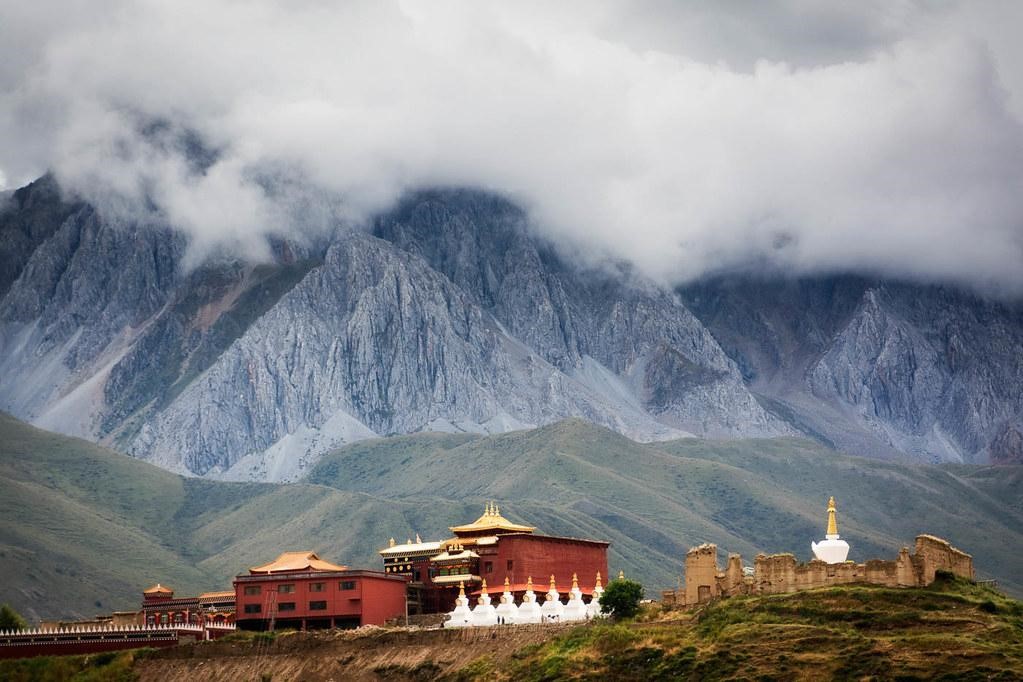
Buddhist monastic architecture is the essence of Tibetan architecture, and its prettifying moirés are the comprehensive embodiment of religious culture and architectural art. Although the functionality and the services rendered by the gompa to the people, viz., education, medicine, astrology and astronomy, form another area of enquiry. The emphasis was always on the socio-economic linkages with the community through their sustainable structures.
Text by Davangi Pathak
Image Courtesy: Robert Hardinge Picture Library, A Lion-S.Varga Ilona, Kandoo adventures, Dalbera – Jean-Pierre Dalbéra & Goneforawander-Rich
Find more about the Buddhist Architecture:
https://www.scirp.org/html/28-1762484_92128.htm
https://www.exoticindiaart.com/book/details/gompas-in-traditional-tibetan-society-idd281/
http://www.kamit.jp/05_wooden/2_gompa/gom_eng.htm
https://smarthistory.org/buddhist-monasteries/
http://www.claudearpi.net/wp-content/uploads/2016/11/LahaulSpiti-1.pdf
Colin Miller photographs Buddhist monasteries and temples in Sichuan province, China. (slate.com)
Hike to the Tiger’s Nest Monastery: Top Tips | Kandoo Adventures


